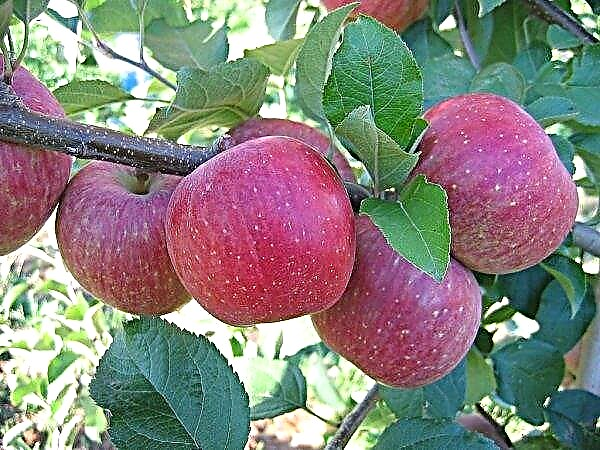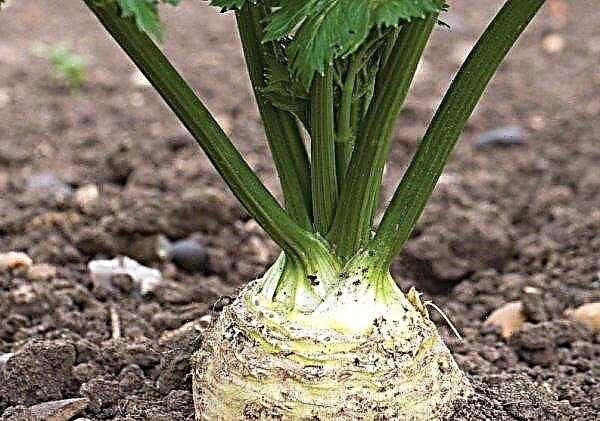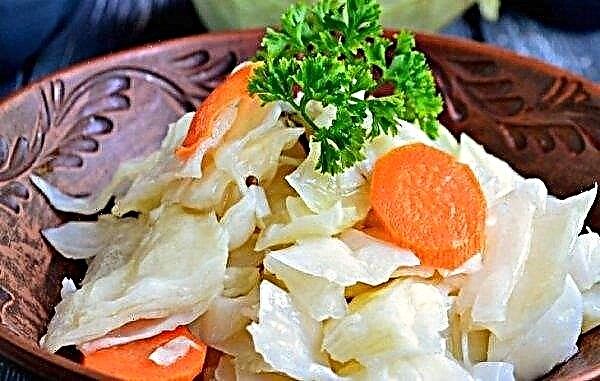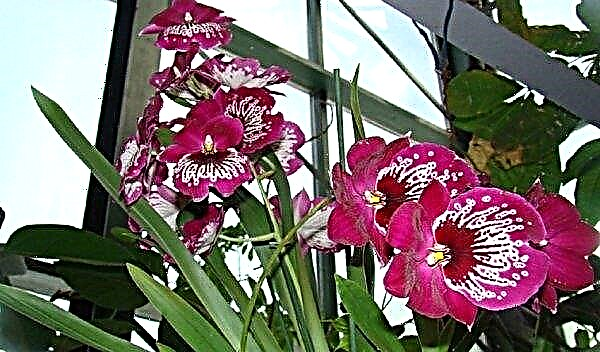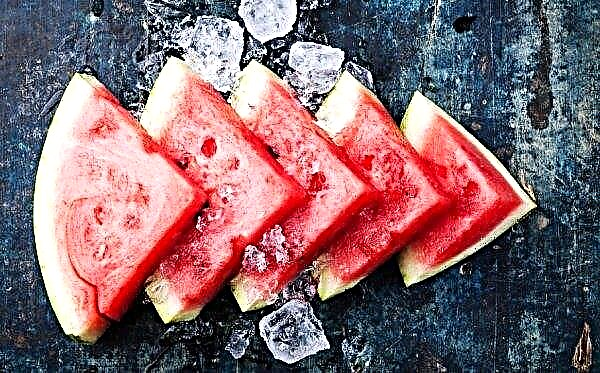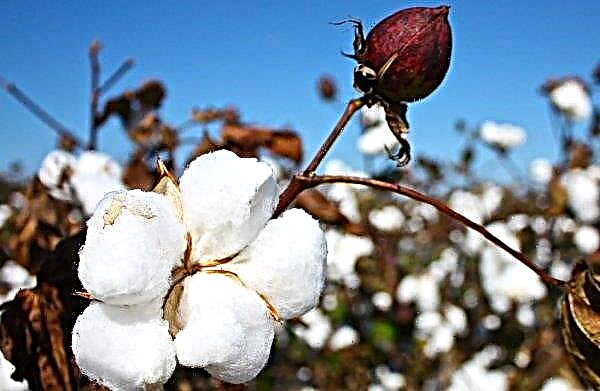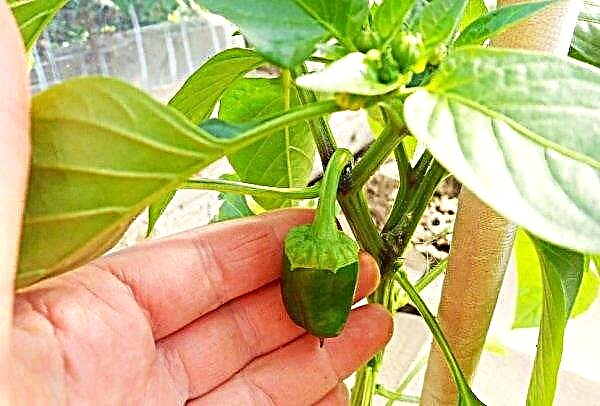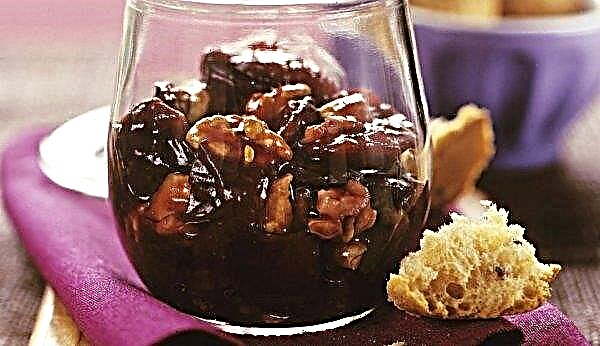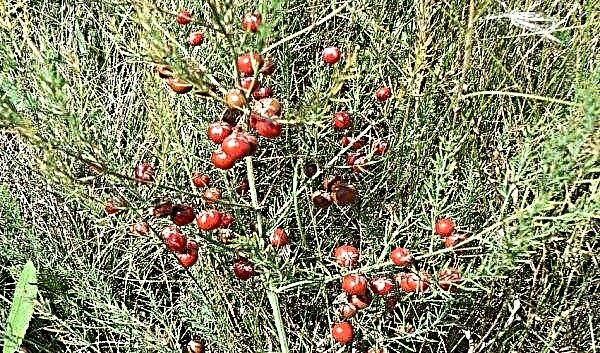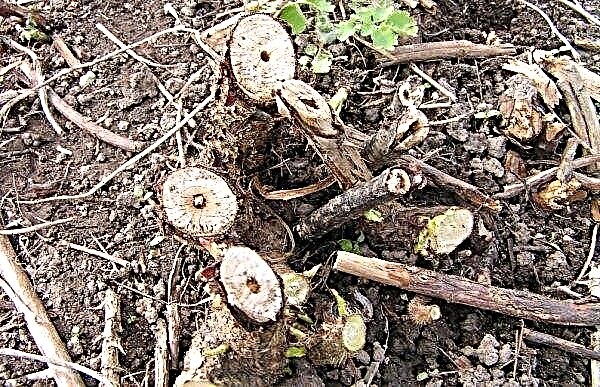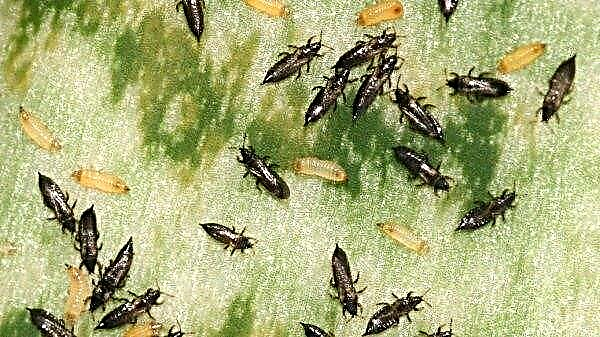Flower honey is one of the popular natural products with a pleasant rich taste and many useful properties. One of its varieties is wild honey - a truly unique repository of valuable trace elements that can heal the entire body and maximize its energy supply. Let's study all the features of this delicacy and find out how to get it.
Features and description of honey of wild bees
Bees living in the wild differ from their "home" counterparts. They are dark gray in color and settle deep in the forest in wood hives - sides. From here came the name of honey of wild bees - bortovaya.
Since wild insects collect nectar away from large cities, enterprises and vehicles, their product is clean and natural. And, in addition, does not contain artificial additives that are often used by beekeepers. The most valuable and environmentally friendly varieties of mountain nectar are mined in the clean regions of the Carpathians and Bashkiria.
Did you know? Fructose contained in honey helps to remove alcohol from the body. Tea with honey after a grand party is one of the best ways to deal with a hangover.
Since wild honey is collected only once a year for 2-3 weeks and a bee swarm collects no more than 15 kg of this sweet treat per season, its cost is quite high. Another factor affecting the price of a product is the difficulty of its production.
Taste, color and aroma
Bead honey is distinguished by a dark saturated color, right down to dark brown, and a thick consistency. Smell and aroma - characteristic, honey. It differs from ordinary nectar in that it has a slight astringency and bitterness in the taste. And the smell reminds linden with a slight note of haze. In general, a very pleasant product, which causes a great desire to try it.

Many lovers of beekeeping products are wondering if bead honey crystallizes or not. Unlike ordinary nectar from an apiary, the product of wild bees does not crystallize over time. And this is another of his great advantages.
What is different from usual
In addition to the lack of crystallization, wild honey looks thicker than usual and practically does not spread. It has a darker color and a rich smell and taste. But the main difference between this delicacy is its purity, environmental friendliness, the absence of harmful additives and a high content of valuable trace elements. What is its high cost connected with.
Ways to collect honey
Harvesting wild honey is the oldest version of beekeeping called beekeeping. Harvesters extracting a sweet treat hollow out hollow trees, artificially creating hives.
As the place of residence of insects, choose the south side of the tree, located away from roads and settlements and surrounded by honey plants - lindens and maples. Also nearby should be some body of water or a source of water.

To attract insects, fragrant herbs are laid in the hive. A comfortable hive is inhabited by bees for 1–2 years and begins their work.
Wild Nectar Harvesting Rules:
- Wear a protective suit.
- Prepare equipment for lifting to a height.
- Take along a piece of equipment for working with a swarm - a special shovel for collecting honey and a chimney for distracting bees.
- Do not select the entire supply of honey, leave a little to feed the bees in the cold.
Important! Some beekeepers make boards from stumps of tree trunks and export them to the nectar collection site in spring, thus localizing the location of the apiary.
Chemical composition and calorie content
Wild honey has a unique chemical composition. And, remaining for a long time in the combs, it is naturally dehydrated and becomes very dense and saturated with almost all valuable vitamins and elements.

The chemical composition of nectar includes:
- a full range of vitamins;
- amino acids;
- enzymes;
- antioxidants;
- glucose, fructose and sucrose.
The product also contains:
- pollen - the main component of honey;
- bee milk - an enzyme component for feeding larvae;
- particles of bee bread (bee bread) - pollen-pollen collected from flowers;
- wax inclusions (zabrus) - pieces of honeycomb “caps” in the hive;
- drone milk (brood) - unfertilized eggs from which drones appear;
- Apitokein (bee venom) - a component consisting of copper, magnesium, calcium and phosphorus, with a bitter burning taste.
All of these natural supplements make wild honey very healthy. The product has a fairly high calorie content, but is used in small quantities, so you can not be afraid to use it. The calorie content of a sweet treat depends on the composition and place of collection and averages 400 kcal per 100 g.
Honey properties
Despite the unique set of biologically active substances and microelements, there are contraindications for taking this product. So, what is the use of wild nectar, and in which cases it is not worth using it.

Benefit
- The product is characterized by such beneficial properties:
- improves the digestive system, increases appetite;
- helps in the treatment of respiratory diseases;
- has antiseptic properties;
- improves metabolism and the functioning of the circulatory system;
- has a powerful antiviral and antimicrobial effect;
- improves immunity, helps to recover after high loads;
- strengthens the nervous system, has a mild calming effect;
- improves brain function, concentration of attention;
- helps to cope with apathy, insomnia, loss of strength.
Did you know? In 1985, Peruvian customs officers discovered a large consignment of honey from Ecuador containing cocaine. However, the version that the drug was artificially mixed into the product was not confirmed. It turned out that the bees collected nectar from the coca plantation closest to the apiary.
Thus, wild nectar has a positive effect on almost all human organs and systems, helping both in the treatment and in the prevention of many diseases. In addition, it is used to make a variety of masks, compresses and ointments. Since ancient times, many beauties knew that honey masks slow down the aging process and rejuvenate the skin, giving it freshness and silkiness.
Harm and contraindications
If you take the product in normal doses, then it will not bring harm. However, the use of sweet nectar with caution should be taken for people suffering from diabetes mellitus, having serious chronic diseases, pregnant women and nursing mothers. For these categories of people, it is best to consult with your doctor first.
Categorically you can not eat a treat to people:
- under the age of 2 years;
- allergic to bee products.

- Excessive consumption of nectar can cause:
- diabetes;
- destruction of tooth enamel;
- excess weight;
- an allergic reaction.
How to distinguish from a fake and choose the right one
Wild honey is an extremely valuable product, so some unscrupulous entrepreneurs sell ordinary honey under its guise. If, after buying a sweet treat, the question arose - what is it, you should conduct a simple check. Since wild nectar is more dense and viscous, to assess its naturalness, you should lower the spoon into the container and raise it to a height of about 10 cm above the jar.
Important! If wild honey drips from a spoon in a thin stream or drips, then this is a fake. At best, this is ordinary nectar, not possessing all the miraculous qualities of a wild fellow. If this is a fake, then its use can become hazardous to health.
Real wild nectar will drain very slowly, not with a jet, but with a flat ribbon and create air bubbles that remain on the surface for a long time. Another method to check the quality of the product is to apply it on a piece of plain white bread and wait 10-15 minutes. If the product is original, then the bread will harden, and a fake, most likely, will turn it into slurry.
How to use
The daily use of this sweet treat will bring great benefits to the body. An adult can eat 1-2 tbsp. tablespoons of product per day, and a child - no more than two teaspoons.

Unfortunately, some people make a fairly common mistake - put honey in hot tea. It is not right. Under the influence of high temperatures, it loses many useful properties. It is also not worth immediately swallowing a treat, you need to hold it a little on the tongue, having tried it with all the taste buds.
The product does not respond well to metal, so it is better to find a wooden or plastic spoon. In addition, do not leave nectar in a saucer or vase on the table, since in the air it will begin to change its properties. Take exactly as much honey from the jar as you are going to eat at a time.
Terms and conditions of storage
It is important not only how wild nectar is collected, but also how it is stored. Proper storage will allow you to enjoy its taste and useful properties of biologically active substances for a long time.
Optimal storage conditions:
- temperature - not higher than + 7 ° С;
- lack of temperature differences;
- without freezing the product;
- in a glass container with a tight-fitting lid.

